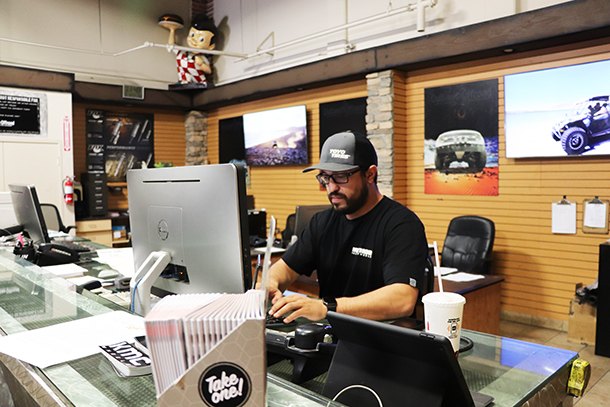Is the Auto Aftermarket Healthy? SEMA Says Yes
SEMA, the Specialty Equipment Market Association, has released its Fall 2020 State of the Industry report, which denotes the health of the automotive aftermarket despite the disruption caused by COVID-19. This report provides companies with the information needed to make good business decisions, not to put a positive spin on a time of uncertainty.
Estimates on how sales have changed over the last year and during the lockdown vary widely, from a shortage of tires and wheels at Phoenix, Arizona’s Warehouse Tire Distributor USA, to advertising delays and cancellations for OutdoorX4, an enthusiast media company based in Spring, Texas.
According to SEMA, in-store sales and other physical channels continue to outpace online sales. Online sales accounted for 39 percent of sales prior to the pandemic, rising to 44 percent since masking was implemented. Fifty-sevdn percent of buyers prefer physical stores, no doubt assisted by retailers and installers being designated as ‘essential’ nationwide. Whether this had anything to do with SEMA’s Political Action Committee, their Congressional Motorsports Caucus, or the work they do with state and local governments is unknown, but the fact remains that speed shops and truck outfitters are open, unlike restaurants, hair salons, or gyms.
The lock down that occurred in the second quarter of 2020 caused the biggest disruption, but sales rebounded in Q3, and manufacturers like Hobbs Truck and Jeep Accessories, distributors, and retailers have increased sales as other businesses reopened. It shouldn’t come as a surprise that 93 percent said it’s business as usual, or had a short-term downturn. Fifty-five percent of companies expect 2020 sales to finish higher than the previous year, optimism that is not shared by many other types of businesses.
Due to COVID-19 and the resultant lack of inventory at stores, more day-to-day necessities have purchased by consumers online. As the country reopens and the virus situation improves, buyers will shop more in-store, especially for the aftermarket’s specialized goods and services. Although some manufacturers have gone direct to consumer (DTC) during the pandemic with good results, most don’t foresee continuing to ship items one by one when they are more accustomed to large wholesale orders from distributors and retailers.
What’s the biggest takeaway from the lockdown? Enthusiasts used their down time or furloughs to work on their vehicles, driving up sales in many product categories. While light-duty pickups are the most popular and commanded the biggest share of aftermarket spending, most segments are growing including classic cars and SUVs. With the fluctuation between reopening and staying at home, it appears that until the coronavirus recedes, we’re going to continue to spend more time and money in the garage.
[Images: © 2020 J. Sakurai/TTAC]
With a father who owned a dealership, I literally grew up in the business. After college, I worked for GM, Nissan and Mazda, writing articles for automotive enthusiast magazines as a side gig. I discovered you could make a living selling ad space at Four Wheeler magazine, before I moved on to selling TV for the National Hot Rod Association. After that, I started Roadhouse, a marketing, advertising and PR firm dedicated to the automotive, outdoor/apparel, and entertainment industries. Through the years, I continued writing, shooting, and editing. It keep things interesting.
More by Jason R. Sakurai
Latest Car Reviews
Read moreLatest Product Reviews
Read moreRecent Comments
- Jeffrey Henry Ford said about innovation, “ If I had asked my customers what they wanted, then they would have said a faster horse." Change is inevitable!!!https://www.wri.org/insights/countries-adopting-electric-vehicles-fastest#:~:text=Currently%2C%2016%20countries%2C%20including%20Canada,create%20and%20enforce%20such%20policies.
- ToolGuy If these guys opened a hotel outside Cincinnati I would go there to sleep, and to dream.
- ToolGuy Michelin's price increases mean that my relationship with them as a customer is not sustainable. 🙁
- Kwik_Shift_Pro4X I wonder if Fiat would pull off old world Italian charm full of well intentioned stereotypes.
- Chelsea I actually used to work for this guy






































Comments
Join the conversation
"Fifty-sevdn percent" Is that Swedish? LOL I have found that replacement tires for my truck have been hard to find. I started shopping around for an all-terrain mid-summer but the ones I preferred weren't available. I ended up getting a set of Yokohama Geolander A/T's on sale. I then had to wait a month for the winter tire change season to slow down before I could get them mounted. They've been excellent on snow, slush, water and ice.
OEM or walk. [grin]